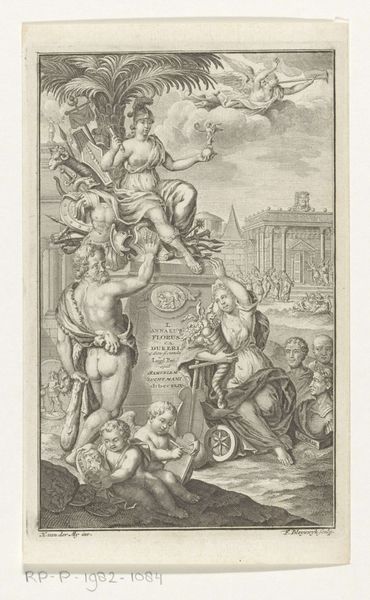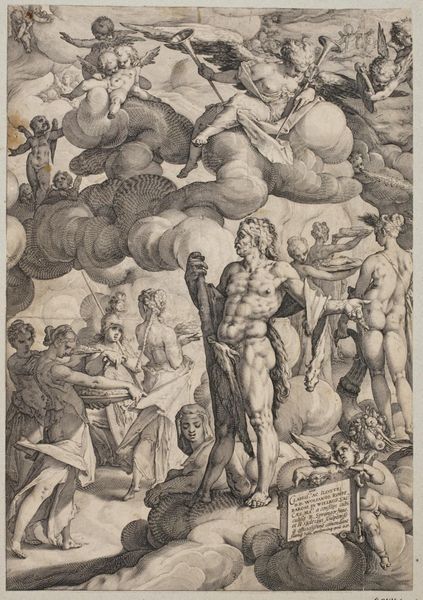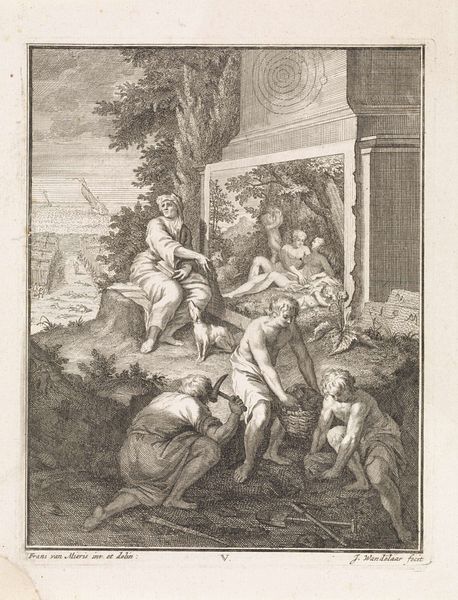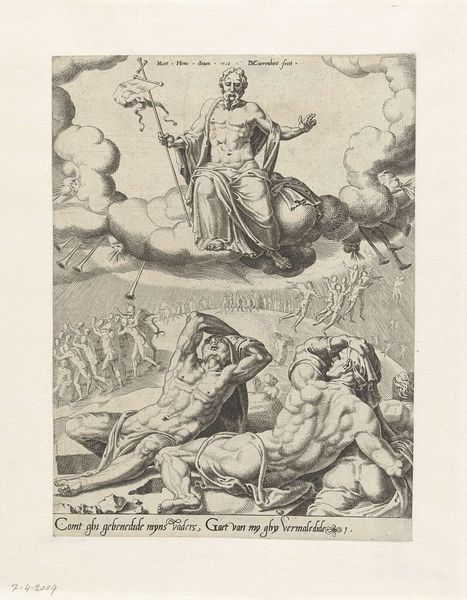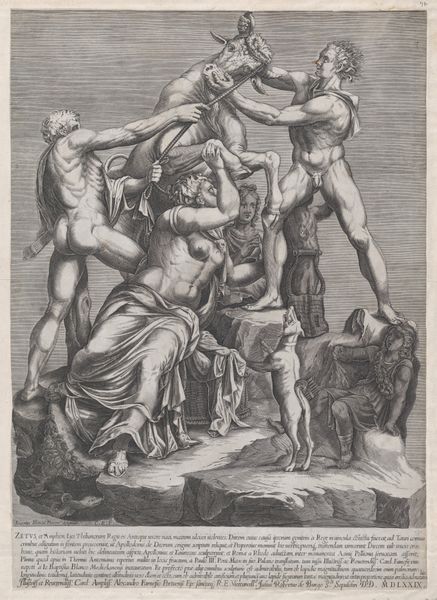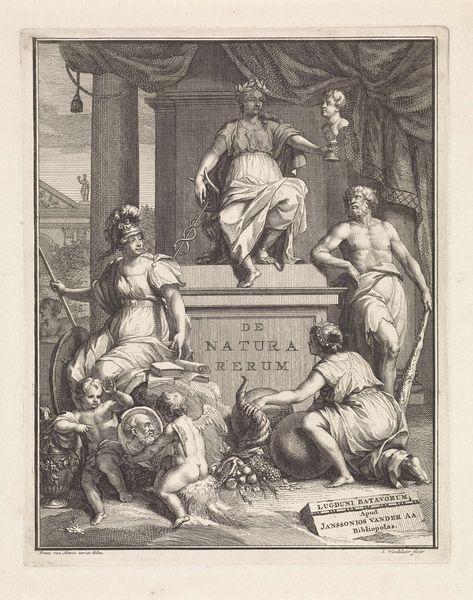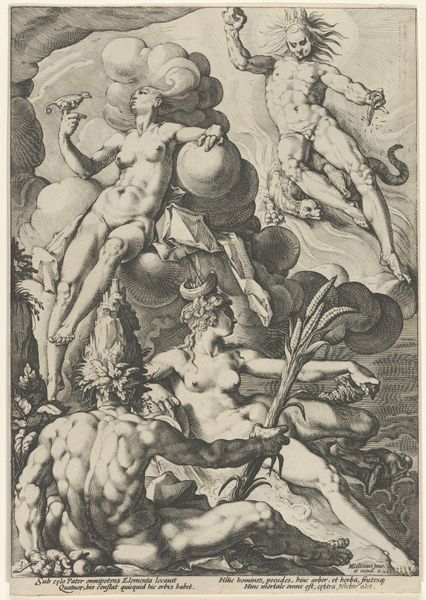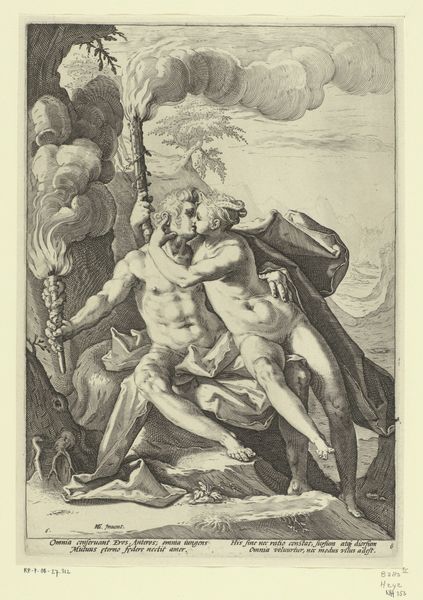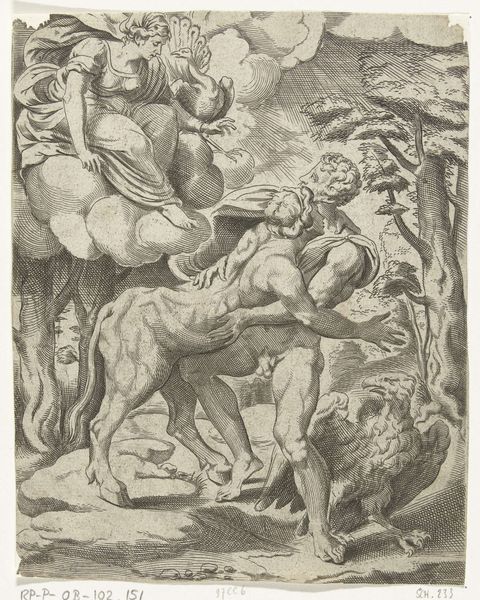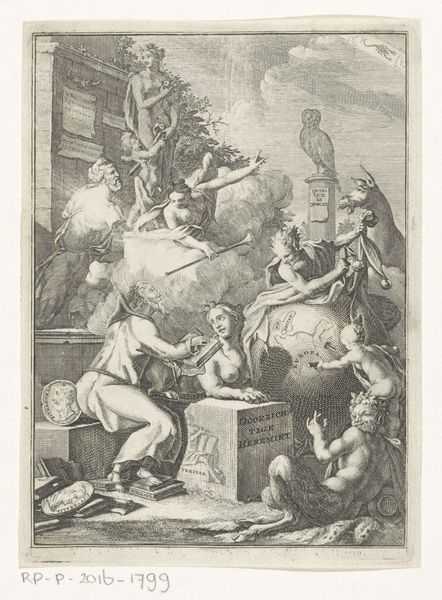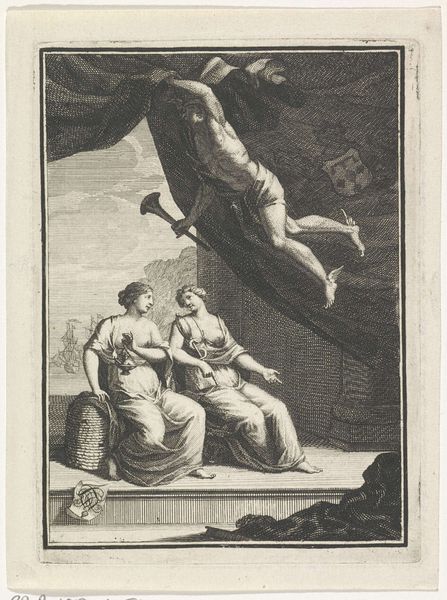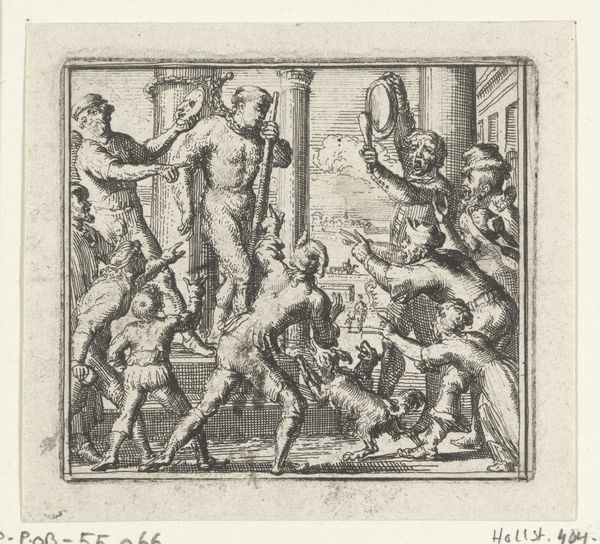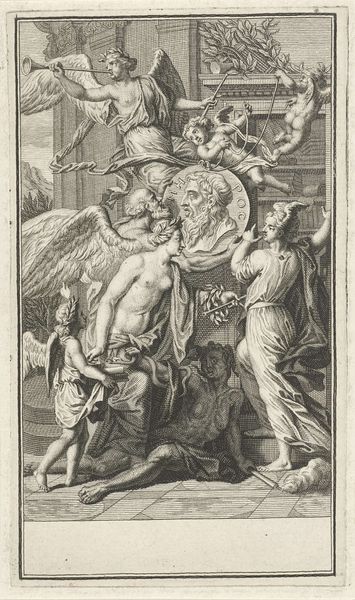
print, engraving
#
allegory
#
baroque
# print
#
landscape
#
figuration
#
classicism
#
line
#
history-painting
#
academic-art
#
engraving
Dimensions: height 305 mm, width 182 mm
Copyright: Rijks Museum: Open Domain
Curator: This engraving, made around 1700 by Joseph Mulder, is entitled "Hercules Crowned by Victoria." It's currently housed here at the Rijksmuseum. What strikes you about it at first glance? Editor: There’s a dreamlike quality, certainly. The linear precision, combined with the mythological subject matter, creates a visually arresting piece, heavy with symbolic weight. There are numerous motifs that deserve a deeper reading. Curator: Absolutely. Let’s begin with Hercules. Elevated on a cloud, he embodies power. Notice Victoria, the winged goddess, bestowing a laurel wreath upon him. The figures below, seated and contemplative, add another layer of narrative. Editor: Victoria, often associated with triumph and victory, here signifies more than just military success. Consider the era—what specific virtues or political ideologies was Hercules embodying? And why these women beneath? Curator: It points towards the political symbolism embedded in the visual language of the time. Representations of Hercules during the Baroque era frequently alluded to ideal leadership, often intertwined with notions of divine right. These women could represent various aspects of virtue and intellect, indicating what virtues give right to Hercules' triumph. Editor: I am intrigued by the architectural elements juxtaposed with the naturalistic landscape. The pyramid on the left, versus the classical pillars, hint at a grand historical narrative, but what should the pyramid tell us? The past's influence, but also the permanence and stability of tradition. It's carefully placed. Curator: Precisely! And the inscription ‘Voyage de C le Brun’ gives us a concrete point of understanding: it points us to Charles le Brun. The engraving may very well depict le Brun's journey of conquest and discovery and situate it within broader intersectional narratives that focus on cultural triumph and historical power. Editor: The way these images borrow from each other really tells a tale of the continuity of art and cultural meaning over centuries. It’s this layering that provides richness. Curator: And underscores the ways that historical and political forces sculpt our understandings of virtue and leadership even now. These figures become a reminder of the lasting and shifting nature of those ideals. Editor: Well, thinking through these details helps this historical artwork still connect with us today. The dialogue creates such great space to appreciate it.
Comments
No comments
Be the first to comment and join the conversation on the ultimate creative platform.
